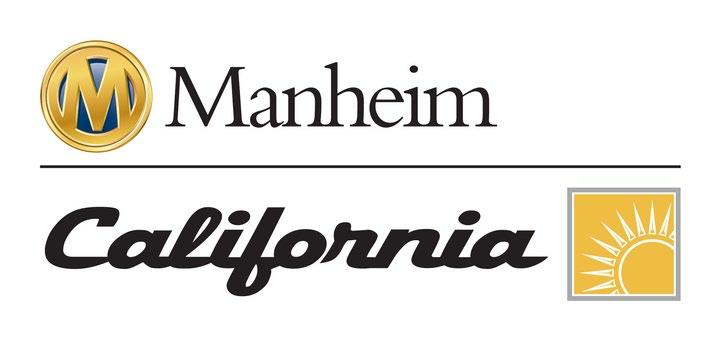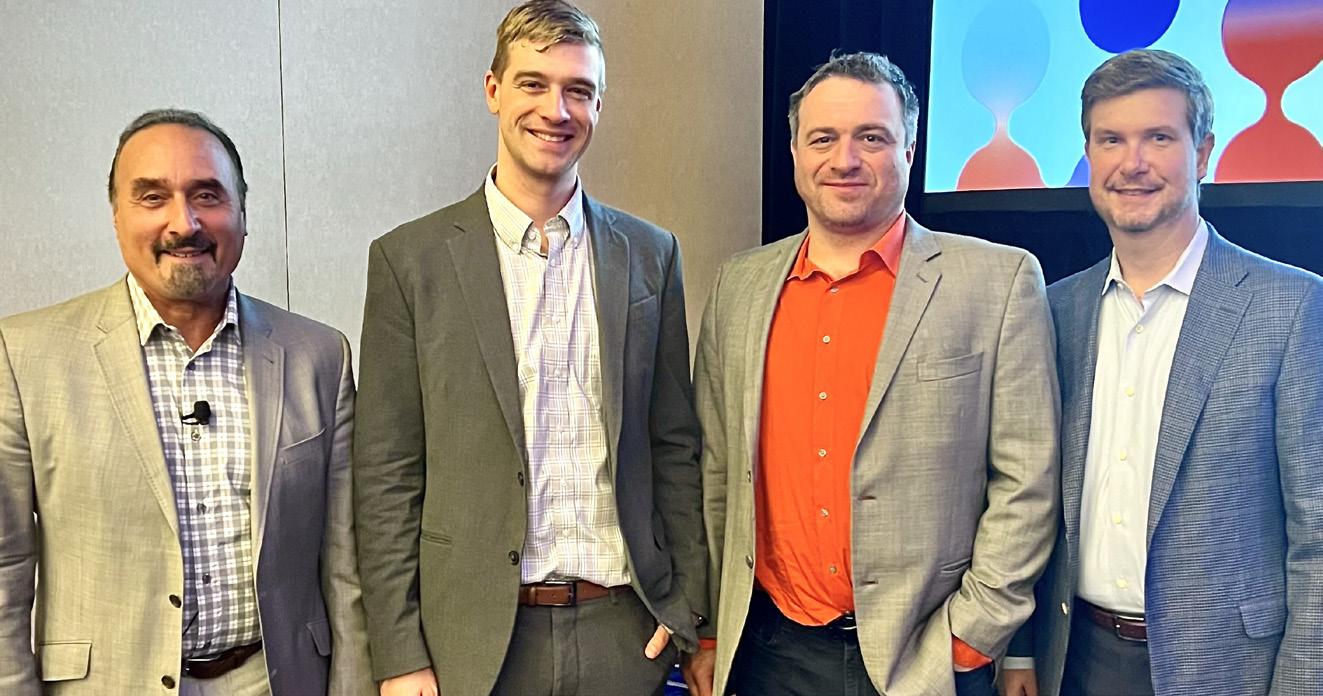
5 minute read
Economic Future Murky
By Jeffrey Bellant
LAS VEGAS – Economists and data experts discussed the challenges of the post-pandemic market during the recent Conference of Automotive Remarketing last month.

Jonathan Smoke, chief economist, Cox Automotive, kicked off the discussion on a macro level with the recent bank failures.
In studying the credit indices Cox produces every month – which show if it’s easier or harder for a consumer to get an auto loan – credit started to tighten last year, Smoke said.
“To start this year, we were actually seeing a little bit of a loosening of the tightening that had happened last year,” he said.
Consumers were seeing slightly better rates and approvals were up. Cox was seeing more subprime buyers as tax season started, Smoke said.
However, looking at the first half of March, Cox data shows credit is tightening in every channel, with the exception of independent used, he said.
“What changed the most? Interest rates,” Smoke said.



Also, lenders brought back the lengthening of terms, which typically helps mitigate price increases and rates, leading to one conclusion.
“Availability of credit, combined with affordability, are going to be significant issues weighing on the industry for several years,” Smoke said.
Interest rates continue to rise, making auto rates go up dramatically – more than 1¾ points in the first two and a half months of 2023.
“We are right at 14% as the average used loan rate,” Smoke said. “If you add that to prices, you really get an affordability problem.”
Tom Kontos, chief economist of ADESA Auctions, said market trends have changed.
“Our industry always used to have both a floor and a ceiling to prices,” he said. “The ceiling was always rep-resented by what new-car prices were doing.”
Once used car prices got so high, the trade-off isn’t worth it to consumers, causing a decline in demand in used cars and a softening of prices.
But today’s supply is having an effect on these trends.
“We’re in what I would call a ‘perfect drought,’” Kontos said. “The offlease units are in short supply and will remain so for at least a couple of years. Repos, though they are starting to rise, they are still only a shade of what they used to be in terms of total volumes at auctions.”
Additionally, dealer consignment is also tight because dealers are holding on to the trades they take and are trying to retail out of them. Lastly, even commercial and rental fleets remain in tight supply, Kontos said.
Generally speaking, used-car prices and new-car prices typically rise at the same rate although used cars did rise at a faster rate during the 2008-2009 recession.
The chip shortage caused the ceiling to rise on used-car prices, while 2022 saw a correction – as more normalizing of those prices – though still higher than normal, Kontos said.
In January, an uptick in sales pretax season resulted from dealers clearing out the vehicles they had bought at higher prices in 2022, he said.
Continued on page 6

“As prices were softening, they were being aggressive in pushing those vehicles through retail channels, getting them sold,” Kontos said. “So, when they started out in 2023, they were in a lean position, inventory-wise, and needed to build that inventory back up so they would have good quantities to sell during the spring tax season.”
Kontos believes prices will likely taper a little sooner in the spring market, even as early as April.
Alex Yurchenko, senior vice president and chief data science officer for Black Book, focused on used prices.
Yurchenko said after a lack of normal seasonality in the market last year, there was a hope it would return in 2023.

“I think it’s still an open question, but if you look at the first three months, we’re in a different world,” he said.
“Weekly prices in the wholesale market are rising over 0.5 % with some segments 1% a week. Even in a normal spring market, we’ve never seen that.”
Yurchenko believes used-car prices will still stay at elevated levels for two reasons.
“One is because of (lack of) inventory,” he said. The second is new-car sales, where incentives are still very low and the availability of new vehicles is still limited.”
Yurchenko forecasts somewhere around 18% depreciation rate, a little higher than historic numbers, but still more normal than it has been.
However, we’re still starting from a very high number, he said.
John Coles, ACV Auctions’ senior director of data science and analytics, looked at the microeconomic side.
During the first portion of 2022, ACV Auctions saw increased demand and delivery compared to the same time as last year.
“(That trend) highlights the need for affordability in the midst of credit tightening,” Coles said.
The residuals of 3- to 5-year-old vehicles – because of OEMs struggling with supply – will continue to hold through this year.
Used retail affordability is a critical factor for dealers and consumers.
Smoke added that 10% of the newand used-market was lost because of affordability and those numbers won’t improve until interest rates stop rising and vehicles depreciate more normally again.
Supply was hampered by the pan- demic, with 8 million to 10 million fewer new cars manufactured during the three years of the pandemic that we would have expected.
There is another factor.
“We actually had a higher scrappage rate at the beginning of the pandemic, which made the situation even worse,” Smoke said.
The industry shouldn’t underestimate the market’s ability to meet customers’ needs, Kontos said.
“The other thing I would add is the creativity of dealers and finance companies to work with rates,” he said. “They’re competitive. So, the Fed does what it does, but our industry does respond with some rate subvention and support to keep payments a bit more affordable.”
Kontos doesn’t deny that rates will go up, but dealers and lenders don’t sit still.
Yurchenko was asked about the challenge of determining residual values in such an unpredictable market.
“I’ll start with affordability, because it’s a concern at every level,” he said.
Yurchenko also touched on what Kontos said, that the supply of 1- to 2-year-old vehicles is down everywhere from rental units to fleet units, so there are fewer choices “at every level.”
Then the shift of new-car vehicles to larger SUVs and pricier units also hurts affordability, Yurchenko said. He said the days of retention rates lower than 50% won’t be returning for up to seven years because of supply.
Smoke returned to the bailout of one of the richest banks in the country, which led to credit tightening for the average Americans trying to get loans in the midst of what the Fed is doing.
Kontos, however, said the Fed chairman has a tough job because inflation is inherent in the economy above just the interest rate increases.
(“Some of this) is being driven by everything we’re trying to do in this society in moving away from fossil fuels to renewables,” Kontos said, “and moving away from internal combustion engines to EVs.
“All of this is taking big R&D dollars and, in the meantime, we have some supply hiccups that result from this, too.”
The reason is the investment into these emerging technologies “doesn’t happen instantaneously.”
Kontos said this means there’s only so much the Fed can do.
ADESA Boston May 12, 19, 26
508-626-7000
ADESA Charlotte
May 4, 18
704-587-7653
ADESA Chicago
May 26
847-551-2151
ADESA Cincinnati/Dayton May 2, 30 937-746-4000
Neither JPMorgan Chase Bank, N.A. nor any of its affiliates are affiliated with ADESA, Inc. or Manheim, Inc. Each auction is solely responsible for their website content, sales events, promotions, fulfillment and operation of the auction.
©2023 JPMorgan Chase Bank, N.A. Member FDIC 5/23








